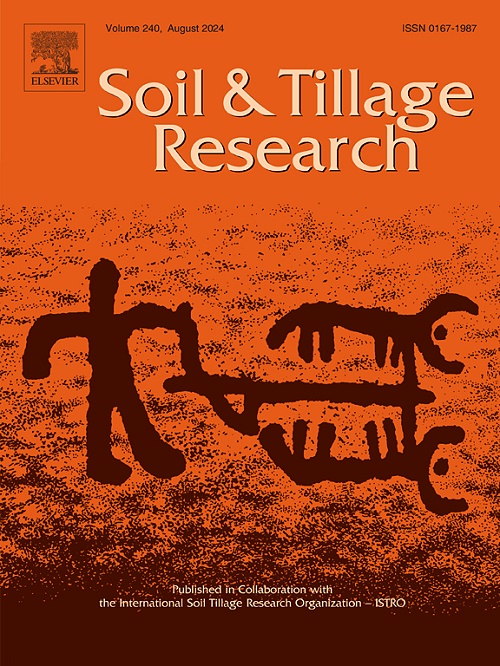Conventional and reduced tillage, and set-aside land – Effects on nitrogen, phosphorus and potassium subsurface leaching from a clay soil during 9 years
IF 6.1
1区 农林科学
Q1 SOIL SCIENCE
引用次数: 0
Abstract
This study investigated the effect of two different autumn tillage intensities, and a permanent green fallow, on subsurface nutrient leaching losses during nine years, with the overall aim to evaluate strategies for reduced nutrient load from arable land. The main hypotheses were that crop production results in larger leaching losses of nitrogen (N), phosphorus (P) and potassium (K) than a green fallow, and that reduced tillage (RT) is a measure for reduced N leaching without reduction of grain yields compared to conventional tillage (CT). The field site was a clay soil (47 % clay, Uderic Haploboroll) in south-west Sweden and the field experiment was equipped with separately tile-drained plots to record the subsurface drainage water flow. The water was analyzed for total N, nitrate-N, total P, phosphate-P and K. Grain yields of main crops and contents of soil mineral N were also determined. Long-term average and most annual means show no significant impact of tillage system, concerning N, P and K leaching losses or yields of main crops. There were indications of higher N leaching using CT compared to RT. Average leaching losses were 3.9 kg N ha−1 yr−1, 0.4 kg P ha−1 yr−1 and 6.5 kg K ha−1 yr−1 from the tilled plots. In 9-year average, the permanent green fallow reduced the soil mineral N content in autumn and decreased the transport of nitrate-N in drainage water compared to both tillage systems. However, green fallow could not be considered a mitigation option for P and K leaching losses.
求助全文
约1分钟内获得全文
求助全文
来源期刊

Soil & Tillage Research
农林科学-土壤科学
CiteScore
13.00
自引率
6.20%
发文量
266
审稿时长
5 months
期刊介绍:
Soil & Tillage Research examines the physical, chemical and biological changes in the soil caused by tillage and field traffic. Manuscripts will be considered on aspects of soil science, physics, technology, mechanization and applied engineering for a sustainable balance among productivity, environmental quality and profitability. The following are examples of suitable topics within the scope of the journal of Soil and Tillage Research:
The agricultural and biosystems engineering associated with tillage (including no-tillage, reduced-tillage and direct drilling), irrigation and drainage, crops and crop rotations, fertilization, rehabilitation of mine spoils and processes used to modify soils. Soil change effects on establishment and yield of crops, growth of plants and roots, structure and erosion of soil, cycling of carbon and nutrients, greenhouse gas emissions, leaching, runoff and other processes that affect environmental quality. Characterization or modeling of tillage and field traffic responses, soil, climate, or topographic effects, soil deformation processes, tillage tools, traction devices, energy requirements, economics, surface and subsurface water quality effects, tillage effects on weed, pest and disease control, and their interactions.
 求助内容:
求助内容: 应助结果提醒方式:
应助结果提醒方式:


